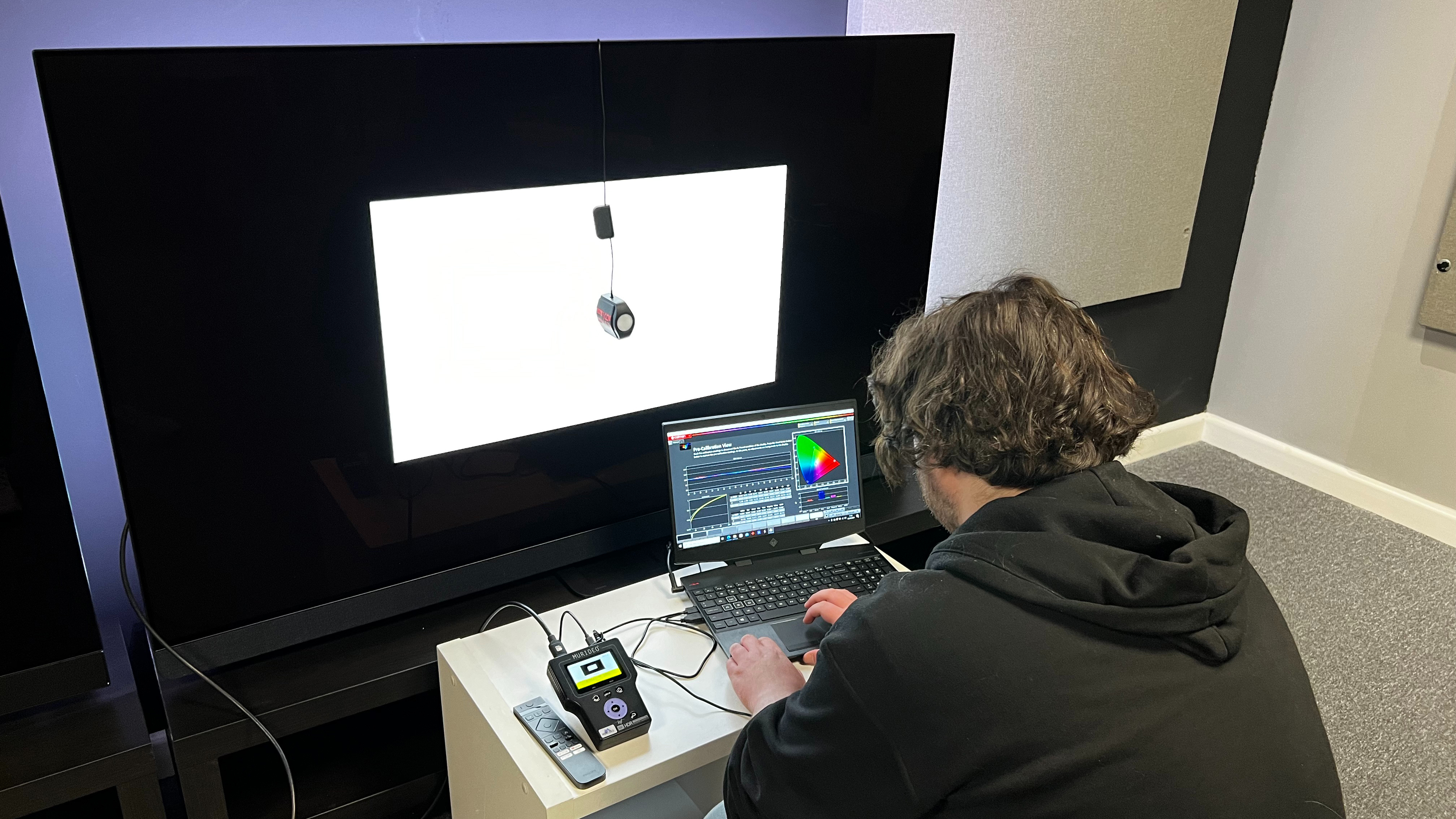How we test TV accuracy at TechRadar

Grayscale and color accuracy count among the most important tests TechRadar runs on TVs. That’s because the best TVs with high grayscale and color accuracy will ensure that images displayed onscreen match the visual intent of the director when a movie was mastered during post-production. If you’re a film fan who wants to experience movies at home with a level of fidelity to how they were displayed at the theater, then having a TV with good grayscale and color accuracy will be crucial.
Although many people prefer to tweak their TV’s picture settings to their liking, a picture preset that offers a high level of accuracy can provide visual benefits with all types of content – sports and news included. The Filmmaker Mode preset found in select TVs is intended as an easy shortcut to getting an accurate picture, though in some cases a set’s Filmmaker Mode will end up being less accurate than other picture modes such as Movie or Cinema. In our TV reviews, we first run grayscale and color tests on multiple picture presets to determine which is the most accurate, and will then make final measurements with that specific preset active.

For TechRadar’s grayscale accuracy tests, the TV is set to its optimal picture preset (typically Movie, Cinema, or Filmmaker mode). A series of gray 10% window patterns ranging from 0 IRE (black) to 100 IRE (white) are then output by a test generator (such as the Murideo 8K SIX-G) and are displayed sequentially and measured using a colorimeter (such as the Portrait Displays C6), with the results recorded by Portrait Displays’ Calman software.
Those measurements provide Delta-E values (the margin of error between the test pattern source and what’s shown on-screen) for each grayscale step, with the averaged values indicating the TV’s accuracy. Any result under 3 is regarded as indistinguishable to the human eye from the original source, and can be considered excellent.

Color accuracy tests involve similar measurements to the ones used for grayscale accuracy, except here primary (red, green, and blue) and secondary (cyan, magenta, and yellow) color test patterns are used. As with grayscale measurements, the Delta-E value for each color is averaged, with a result under 3 considered to be excellent.
You might also like
Sign up for breaking news, reviews, opinion, top tech deals, and more.

Al Griffin has been writing about and reviewing A/V tech since the days LaserDiscs roamed the earth, and was previously the editor of Sound & Vision magazine.
When not reviewing the latest and greatest gear or watching movies at home, he can usually be found out and about on a bike.